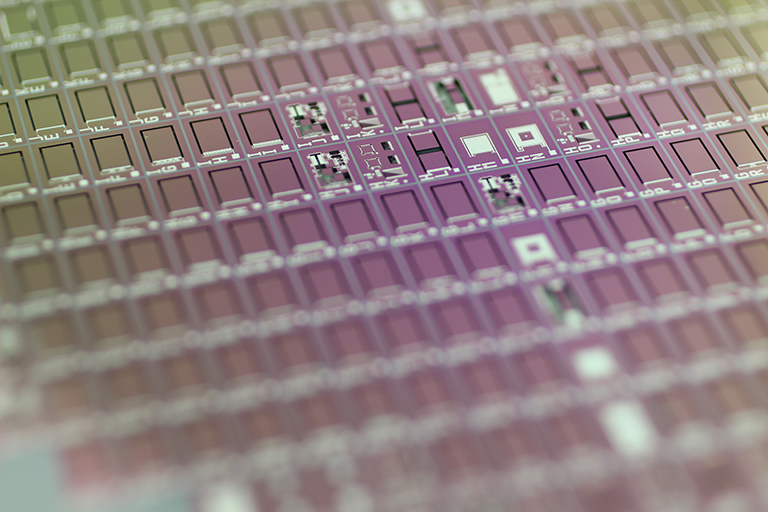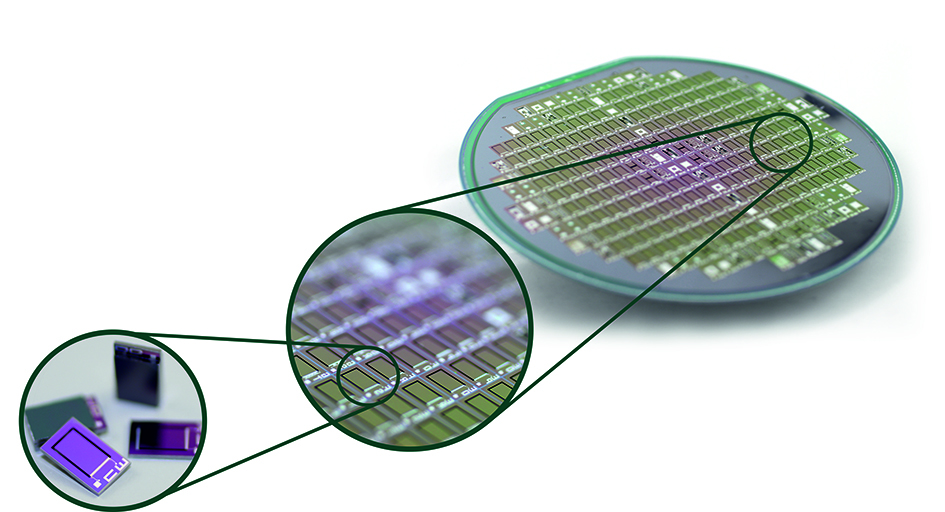Piezoelectric low-power MEMS with aluminum nitride


Aluminum nitride (AlN) is a seminal material for MEMS and NEMS sensors and actuators. The energy density of piezoelectric active principles is much higher than capacitive ones. This allows the shrinking of MEMS and NEMS, reduces costs and energy consumption and increases the areas of application. Thereby, piezoelectric driven MEMS (piezoMEMS) can replace capacitive applications.
AlN is highly capable of being integrated into micromechanical and CMOS processes. This is a significant benefit for AlN-based piezoMEMS system integration into CMOS-based integrated circuits, compared to Lead-Zirconate-Titanate (PZT) or polymer piezoelectric materials (PVDF). Furthermore, AlN has low aging effects and high temperature stability.
In cooperation with the Center for Microtechnologies a sputtering technology and characterization methods for piezoelectric thin film AlN are developed. Furthermore, a technology for an integration of the thin film into silicon MEMS is available, which allows a multi project wafer (MPW) production for flexible and customized prototype production.
Low-power applications
Exemplary, the development of ultra-low-power piezoMEMS, the Power-Down-Interrupt-Generator, is shown. The Power-Down-Interrupt-Generator (PDIG) is a MEMS device with a spring-mass-system and coupled AlN layer. In result of acceleration the PDIG deforms and the AlN generates electric charges. These charges will be used to wake up an electric circuit, e.g. a highly precise acceleration sensor. State of the art acceleration sensor measure constant and consume permanently electrical energy. With the use of the PDIG, the acceleration sensor is in the sleeping mode as long as a measurement is not required. If acceleration occurs, the PDIG wakes up the electrical circuit and therewith the acceleration sensor. As result the effective energy consumption shrinks to a minimum. Especially for wireless systems energy saving solutions are essential to minimize consumption, rise battery lifetime and save resources. Furthermore, the longer battery lifetime implies longer maintenance intervals. For measurement systems with difficult accessibility the energy saving has special economical advantages.
The industry-oriented piezoMEMS applications of the Fraunhofer ENAS base on fundamental research results in microtechnology and characterization. Wide knowledge of AlN growth processes exists. Detailed investigations of the dependencies to the piezoelectric behavior with the technology process are the fundament for high-end piezoMEMS. The permanent optimization of the sputtering conditions and advancement of the piezoelectric characterization tools for thin films are unique at the Fraunhofer ENAS and the Center for Microtechnologies. The Fraunhofer ENAS has unique methods for the precise determination of the piezoelectric coefficients d33 and d31 of thin films. A highly precise characterization of the AlN is the key for innovate piezoMEMS research and development.
With AlN the Fraunhofer ENAS has a CMOS compatible thin film material for the integration into silicon MEMS. In addition to permanently optimized AlN technology processes, the Fraunhofer ENAS has unique and highly precise characterization tools for the determination of the piezoelectric coefficients for thin films. Based on this fundament industry-oriented micro sensors and actuators are developed. The high coupling coefficient, CMOS compatible processes, intrinsic energy generation for ultra-low-power devices, out-of-plane actuation functions and many other advantages are the driving forces for the Center of Microtechnologies for the research and development of AlN-based cutting edge innovate piezoMEMS.
Acknowledgment
The work related to integration technologies of single and stacked components on PCB was partly supported by the European Union (EFRE) and by the Free State of Saxony, Germany, within the research project CoolPod funded by SAB-Foerderbank (100107775).
 Fraunhofer Institute for Electronic Nano Systems
Fraunhofer Institute for Electronic Nano Systems